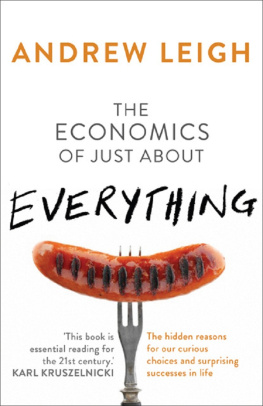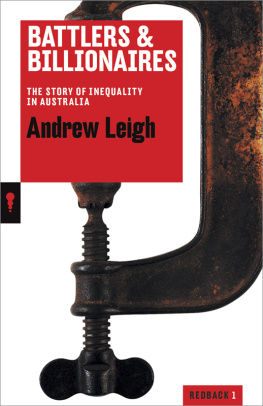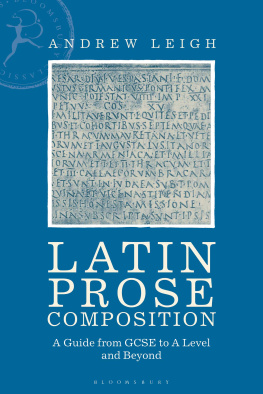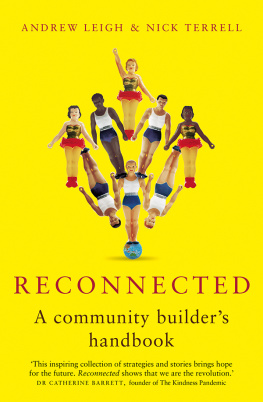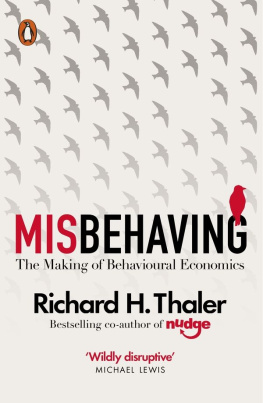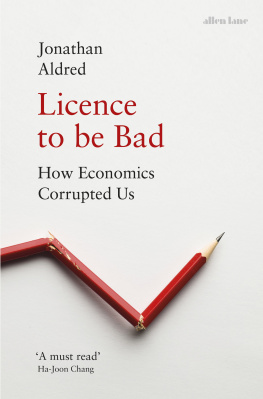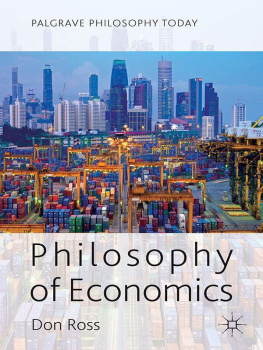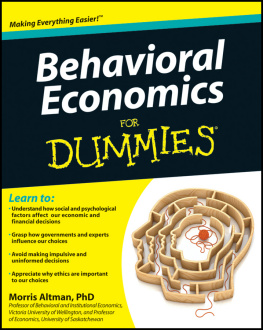

How do bad incentives delay babies and kill convicts, whats a rule of thumb you can use when shopping for clothes, and why is economics like a blue guitar?
On the evening of Wednesday, 30 June 2004, 33-year-old Cathy Swales of Sunbury, north of Melbourne, sat very still at home and sipped a cup of tea. Already 39 weeks pregnant, she waited gingerly for the hours to tick by.
Swales had good reason to be nervous. The previous month, Treasurer Peter Costello had handed down his ninth budget, proudly announcing that the parents of all babies born on or after 1 July 2004 would receive $3000 from the government.
Because the policy came into effect just two months after the announcement, it could not affect when people became pregnant. But could such an incentive lead those who were already pregnant to delay births? Asked by a reporter Would it have been better to have announced and introduced this policy at the same time?, the health minister stammered, Well if I thought that mothers would put their babies at risk, but I dont believe mothers would put them at risk.
At the heart of the issue was a fundamental economic question: how much do people respond to incentives? To test this, Joshua Gans and I teamed up to crunch the numbers. Our approach took the same form as many of the studies youll read about in this book: get as much data as possible, from as many sources as possible, then look for patterns.
In this case, it would have been hard to miss the result. For the previous three decades, the number of babies born each day in Australia had hovered at around 600. On 30 June 2004, it spiked downwards. Then, on 1 July, Australia recorded 1005 births which was then the highest number of babies born in a single day since records began. The baby bump continued well into mid-July. Altogether, we estimated that more than 1000 births were moved from June 2004 to July 2004.
How did parents manage to shift births? The answer lies in the fact that around half of all births are medically induced or delivered by caesarean section. Indeed, when we broke down the data by birth procedure, we saw that the number of caesarean sections and inductions was significantly higher in July than June. Conversely, vaginal births (without an induction procedure) stayed constant. Parents were responding to incentives.
Amused by our results, we decided to see whether incentives might matter at the other end of life. Just as incentives affect when a person is born, could they affect the timing of death? We cast our eyes back 25 years earlier, to 1 July 1979: the day on which federal inheritance taxes were abolished. For those leaving estates over $1 million, inheritance taxes were 28 per cent.
As in our births study, we compared the last week of June with the first week of July. And again, we found a significant difference. We estimated that around 50 fewer people died in the final week that the Australian inheritance tax was in operation. On the face of it, this might seem to be a smaller impact than the Baby Bonus, but that could be because inheritance taxes only affected about one in ten of those who died in 1979. Once we take this into account, it looked to us as though about half of those who would have paid inheritance taxes if they had died in June 1979 managed to shift their date of death to July 1979. Now thats what I call dying to avoid taxes.
How do people shift their date of death? One possibility is that families were considering whether to turn off life support. Another is that through force of will, people were able to hang on for another week. Its also possible that descendants misreported the date of death to the authorities. Unlike the Baby Bonus study, we cant be sure precisely how so many people managed to avoid inheritance taxes in the final week: we just know that they did it.
One of the core principles of economics is that people respond to incentives. In the words of Chicago Universitys Gary Becker, a pioneer of the economics is everywhere movement, economics comes down to maximizing behaviour, market equilibrium and stable preferences, used relentlessly and unflinchingly. In the case of the Baby Bonus, you could see the health minister flinching as she considered the incentives that her governments policy had created.
If there are two themes to this book, they are that economics is everywhere, and economics is fun. If your eyes glaze over when you read the business pages of the newspaper, dont worry. This is not a book about the terms of trade and deflationimportant as those topics are. In these pages, youll see how the ideas of economics can illuminate questions as diverse as sport and dating, dieting and art. Some of these topics dont have anything to do with money. The study of economics has been described as legitimating self-interest, a greed is good philosophy. But in fact, economics envisages people maximising wellbeing and happiness, not financial rewards. Economics can explain the behaviour of both Scrooge McDuck and the Dalai Lama.
Over recent decades, there has been a revolution in economics as our discipline has broadened its scope. Top young academics are working on everything from child soldiers to racial profiling, newspaper bias to the effects of television. After assessing a batch of newly minted academics from elite universities, Princeton economist Angus Deaton observed: Twenty years ago, there was essentially none of this.
And yet the Freakonomics revolution has taken too long to get to Australian universities. With a handful of exceptions, antipodean economists tend to focus on more traditional topics. Over the coming years, I hope we will see the economics of everything shaping the way in which we teach economics at the high school and undergraduate level. Perhaps it might help to boost enrolments in economics, currently the discipline of choice for just one in 50 Australian undergraduates.
Lets take a simple example of how economics can help you solve everyday problems. Suppose youre at the beach and decide to treat yourself to a soft-serve chocolate-dipped ice-cream. Its a scorchingly hot day, and just as you go to take a bite of the ice-cream, it slips out of your sweaty hand and falls into the sand. Seeing this, the seller calls out, Would you like to buy another?
At this point, many of us would angrily kick the sand and walk off. But economics tells us that if you have enough cash in your hand, the right answer is almost certainly yes. The first ice-cream is gone, so you should ignore it when making your decision. If you were willing to pay the cost of an ice-cream one minute ago, you should be willing to do so again now. In economic jargon, you should make your decision at the margin.
Applying economic thinking can literally mean the difference between life and death. In 1790, the Second Fleet set sail from England. Unlike the First Fleet, which was organised by the British Government, the Second Fleet was a commercial operation. The three main ships of the Second Fleet, Surprize, Neptune and Scarborough, were contracted from shipping firm Camden, Calvert & King, which had previously been involved in the trans-Atlantic slave trade. The firm were paid a flat fee of 6 pennies for each convict who departed. Accordingly, they packed nearly 1000 convicts onto the ships.
The five-month voyage was one of the most brutal in shipping history. To keep costs down, the crew was recruited from local taverns. They were brutal to the convicts, with floggings routinely administered. Convicts received starvation rations, apparently so that some of their food could be sold upon arrival. Prisoners were kept below deck and in leg-irons. Scurvy ran rampant. By the time the ships docked in Sydney harbour, the convicts were covered in lice. Around one-third of those who had left England were dead, and many of the survivors could barely move or speak.
Next page
